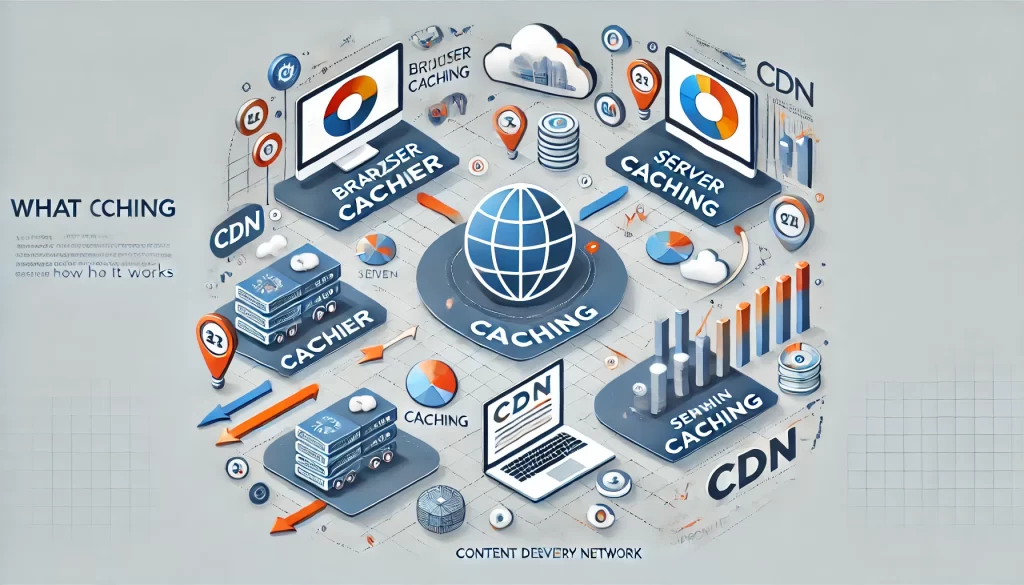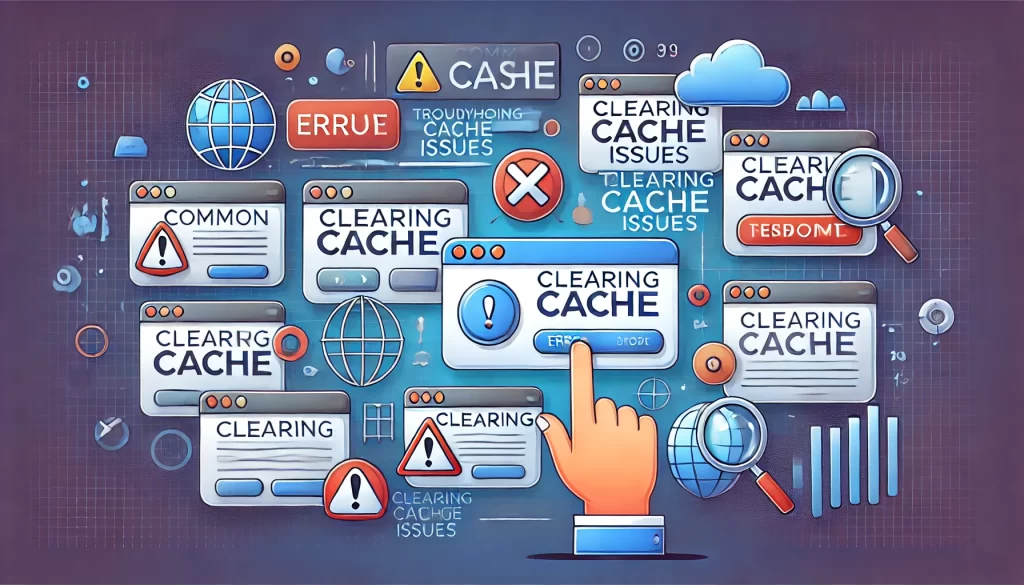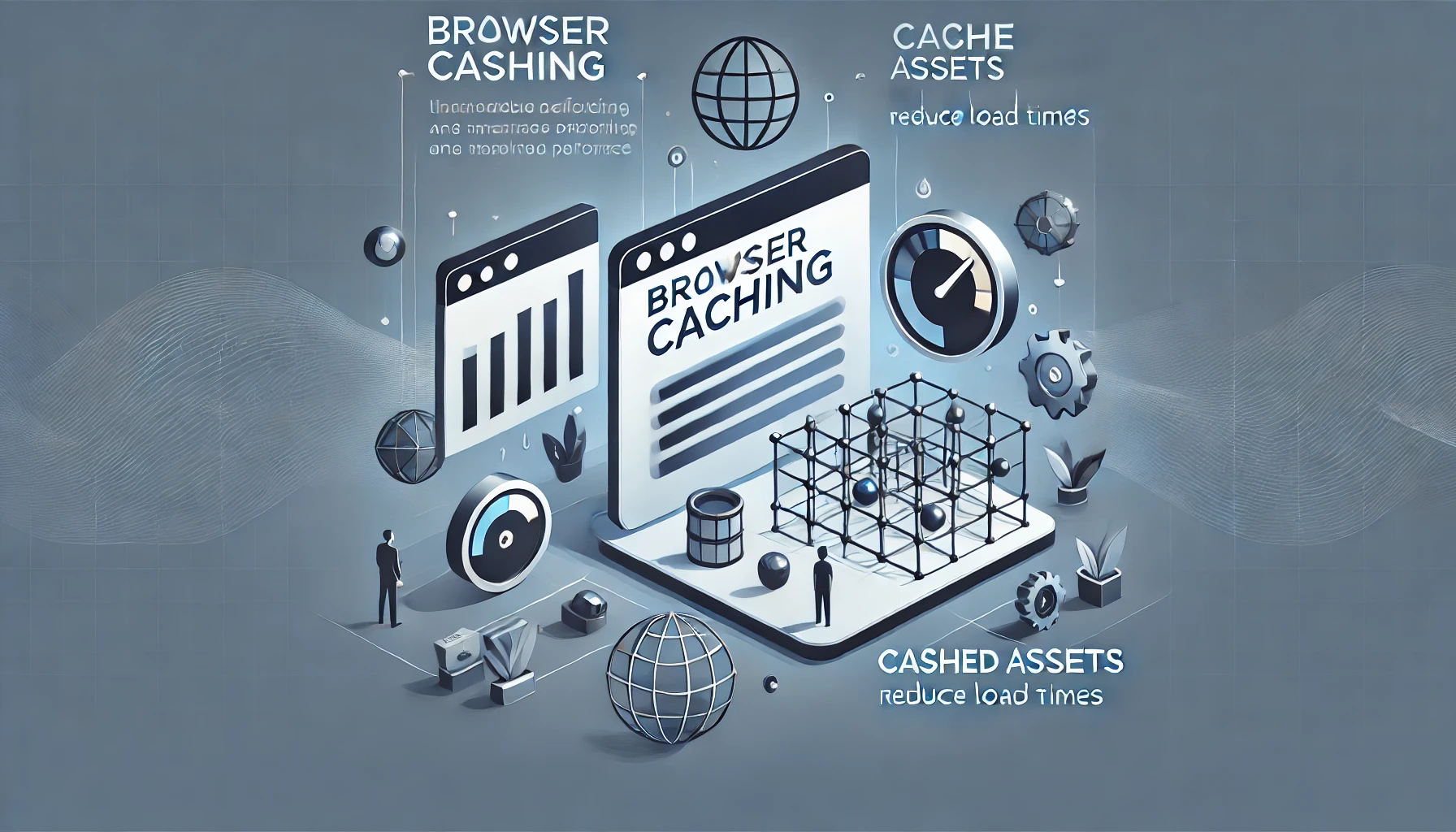What is a Web Cache?
A web cache is a temporary storage area that stores copies of data or web pages to speed up future requests. Instead of fetching the same data repeatedly from a server, a cache allows the data to be retrieved from a local storage system, improving the speed and performance of a website or application.

Definition of Caching | A Beginner’s Guide
Caching refers to the process of storing copies of files, data, or web pages temporarily to improve performance. When a user requests data, the cache will check if the requested data is already stored locally. If it is, the cache serves the data directly without contacting the server. This reduces load times and server requests, enhancing both speed and efficiency.
Caching can occur at various levels, including:
- Browser Cache: Stores files like images, HTML, and CSS to speed up page loading.
- Server Cache: Stores entire web pages or database queries for fast retrieval.
- Content Delivery Network (CDN) Cache: Distributes cached content across global servers to reduce latency.
How Browser Caching Affects Web Design
Browser caching allows frequently used resources, such as images, scripts, and stylesheets, to be stored locally in a user’s browser. When the user revisits the website, the browser fetches these resources from the local storage instead of re-downloading them from the server. This can significantly reduce loading times, providing a smoother experience.
For web designers and developers, understanding and managing caching is critical for optimizing site performance and user experience. However, improper configuration of caching can sometimes lead to issues, like outdated content being displayed, which is why cache management is an essential skill.
Suggested Posts:
• FAQs and Community Resources for Cache Management
• Firefox Cache Management
• Microsoft Edge Cache Management

The Role of Web Caching in SEO
Caching plays an important role in SEO. Websites that load faster tend to have better user engagement and higher search engine rankings. Google uses page load speed as a ranking factor, which means that well-optimized caching can contribute to improved SEO.
- Improved User Experience: Faster loading times lead to better user experience, which can reduce bounce rates and increase engagement.
- Increased Crawl Rate: When a search engine crawls a site quickly, it can index more pages, potentially boosting the website’s search visibility.
- Lower Server Load: Proper caching reduces the load on the server, preventing slowdowns during high-traffic periods.
By effectively using caching mechanisms like browser cache, server cache, and CDN cache, website owners can enhance both SEO performance and site usability.
Caching Meaning in Computers vs. Websites
Caching in computers and websites has similar goals but operates differently.
- In Computers: A computer cache stores frequently accessed data, such as CPU instructions or files, in faster storage like RAM. This reduces access time for these files and speeds up operations.
- On Websites: Web caching involves storing static assets (like images and JavaScript) in a cache. The goal is to minimize server load and reduce page loading time.
While the underlying concepts are similar, website caching specifically targets improving web performance by reducing data retrieval times from the server.
How Caching Can Speed Up Websites
Caching plays a vital role in speeding up website performance. Without caching, each page request would involve fetching data from the server, which can be time-consuming, especially for large websites with complex databases. By storing frequently requested files and resources in a cache, websites can reduce server load and provide faster access.
Types of Caching to Speed Up Websites:
- Browser Caching: As mentioned earlier, this stores static resources in a user’s browser. This speeds up the loading time for repeat visits.
- Server-Side Caching: This involves storing dynamic content on the server. Tools like Varnish, Memcached, and Redis help reduce server-side processing time.
- Content Delivery Network (CDN): CDNs store copies of web content on distributed servers worldwide. This allows users to access data from a nearby server, reducing latency.
With effective caching, websites can dramatically improve user experience by providing fast and responsive pages.
Suggested Posts:
• Opera GX and Opera Cache Management
• The Ultimate Guide to Browser Caching
• Cross-Browser Cache Management
Troubleshooting Cache Issues on WordPress
While caching is beneficial, it can sometimes cause issues on WordPress sites. These issues often involve displaying outdated content, improper content updates, or conflicts with other plugins.
Common Cache Problems on WordPress:
- Outdated Content: Sometimes, cached versions of pages are served, leading to the display of old content. This can be fixed by clearing the cache.
- Plugin Conflicts: Some WordPress caching plugins may conflict with other plugins, causing issues like slow loading or incorrect page display.
- Cache Not Clearing: Sometimes, the cache doesn’t update or clear automatically, meaning that the changes you make won’t be reflected on the site until the cache is manually cleared.
How to Fix Cache Problems:
- Clear Cache: Most caching plugins have an option to clear or purge the cache. This forces the website to fetch the latest content from the server.
- Disable or Reconfigure Caching Plugins: If a plugin conflict arises, disabling the caching plugin or adjusting its settings can often resolve the issue.
- Check CDN Settings: If using a CDN, ensure that cached content is updated on all servers.
By addressing these common issues, WordPress website owners can ensure that caching provides the intended performance benefits.
FAQs about Caching
What is the main purpose of web caching?
The main purpose of web caching is to store copies of frequently accessed data to reduce load times and server requests, which speeds up website performance.
How does caching improve website performance?
Caching improves performance by allowing web resources to be retrieved from local storage, reducing the need for repeated requests to the server and thus speeding up load times.
What are the types of caching in web development?
The main types of caching are browser caching, server-side caching, and CDN caching, each serving to store data at different levels for faster retrieval.
Can caching affect SEO?
Yes, caching can improve SEO by increasing page load speed, which can result in better user experience and higher rankings in search engines.
How can I clear my cache on WordPress?
You can clear your cache through your caching plugin’s settings. Most caching plugins, like W3 Total Cache and WP Super Cache, offer an option to purge the cache directly from the WordPress dashboard.
Are there any downsides to caching?
While caching can significantly speed up websites, improper configuration or issues with cache expiration can lead to outdated content being displayed, affecting user experience.
Key Takeaways
Caching is a powerful tool for improving website performance, enhancing user experience, and boosting SEO. By understanding the different types of caching and how they work, website owners can make smarter decisions that lead to faster websites with less server load. Troubleshooting caching issues is a crucial skill, especially when working with WordPress. With proper caching practices, websites can be made more responsive, efficient, and SEO-friendly.
- Caching speeds up websites by storing frequently used data, reducing load times and server requests.
- Different types of caching (browser, server, and CDN) each play a crucial role in improving performance.
- Caching affects SEO by improving page load times, which helps boost search engine rankings.
- Troubleshooting caching issues in WordPress involves clearing the cache, disabling conflicting plugins, or reconfiguring caching settings.
By following best practices for caching, websites can perform better, rank higher, and provide a better experience for users.
